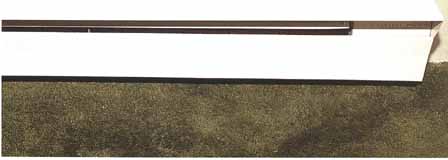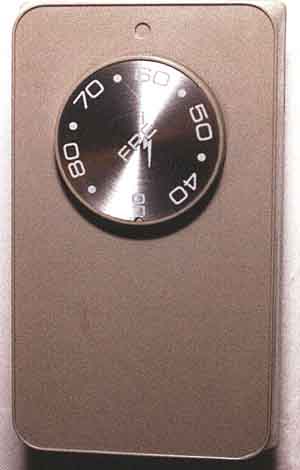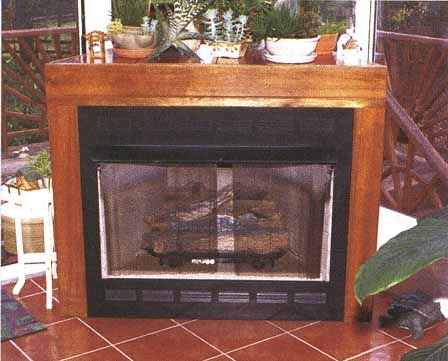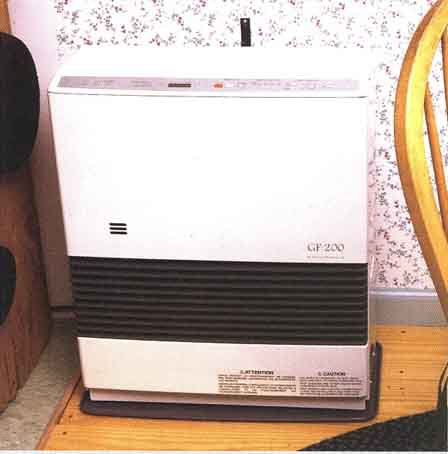Advice from the Professionals:
Electric-resistance baseboard heaters are cheap to install but
expensive to operate. They work on the same principle as an electric
space heater. Caution: A typical humidifier is basically a large
sponge sitting in water. Some air from the furnace supply duct
is shunted through the sponge, then sent back into the return. This air recirculation reduces efficiency, and the humidifier may contribute to health problems. A high humidity level is not healthy for your family or your home. The last thing you want is to send the air you breathe through a damp sponge. Some new humidifiers are safer, but remember: Once the house is tightened, it is much less likely to dry out in winter. My recommendation for built-in humidifiers is to shut off the water supply, remove them, and permanently seal the holes in the ductwork. |
Most electric-resistance heating systems are simple electric baseboard heaters. There are also various types of radiant-heat systems (usually panels mounted on ceiling or walls, built into valances, or built into ceiling or wall-finish systems). Occasionally you’ll even find an electric- resistance boiler or furnace.
Cheap to install but expensive to operate, electric-resistance baseboard heaters operate on the same principle as that of a toaster, hot plate, or electric space heater. An electric current passes through a wire element, heating it. Air passes through and is heated by fins in the baseboard. Electric-resistance heat is 100% efficient; every kilowatt-hour of electricity that you pay for is converted to heat.
The reason electric baseboards are expensive to operate is that electricity costs more than fossil fuels per unit of heat -- typically two to three times more. One advantage of electric heat (besides the low installation cost) is the ease with which rooms can be zoned. But with the high fuel cost, it’s difficult to justify except in special situations, such as isolated rooms, extremely mild climates (southern Florida or Hawaii, for instance), or super-insulated, passive solar houses.
Because these systems are so simple, there is very little that can be done to improve their efficiency. Short of completely replacing them, the best approach (as always) is to insulate and thoroughly seal the building envelope to reduce heating loads.
SAFETY FIRST Never use an unvented propane or kerosene heater indoors. And never install a “vent-free” fireplace like this one, which dumps significant amounts of potentially toxic combustion byproducts and water vapor into the air while burning. For about $200 more, you can get a Unit with a vent system or, better yet, a sealed combustion system.
|

An electric baseboard heater is its own distribution system
and is usually precisely in the area where heat is desired, so there are
no distribution losses like those found in ductwork.

Individual-room thermostats have often been a selling
point for electric heat. Don’t always believe your eyes, though; a poorly
calibrated thermostat can fool you into thinking that you’ve set the room
temperature lower than you really have.
Thermal Storage Heaters Electric thermal storage heaters promise economical operation, but they work only if your electric company offers a cheaper time-of-use rate, which is a discounted price for electricity during periods of low demand. These well-insulated wall heaters use electric-resistance elements to heat a large mass of ceramic bricks to a high temperature during off-peak hours, when electricity is cheap. Then, during the expensive time periods, heat is distributed into the room as needed with a small fan. Although they don’t save energy, they can save money, but their value depends heavily on long-term availability of a utility rate structure. In my experience, that may not be something on which you can depend. |
Replacing electric heating systems
Because of the high operating cost of electric- resistance heat, many people are interested in replacing such systems with another type. This is the only situation in which installing a new heating-distribution system may be cost-effective. Take, for example, a moderately sized house that uses 15,000 kilowatt-hours (kWh) for heating every year. At 10 per kilowatt-hour, the annual heating usage is about $1,500. Let’s say you get a bid to install a propane-fired gas boiler for $4,500. At a propane cost of$1.20 per gallon and a boiler efficiency of 85%, this house will cost a little less than $800 a year to heat, At a savings of $700 per year, this system has a simple payback of about six years.
Propane tends to be more expensive per unit of heat than fuel oil or natural gas, so one of those alternatives would be even more cost-effective. If you use this opportunity to replace an electric hot water heater with an indirect-fired tank off a boiler, the payback would probably improve. On the other hand, lower electric rates would reduce the potential savings.
Supplemental Heat A great way to offset a significant portion of electric heat, for a fraction of the cost of a new central- heating system, is with the installation of a gas- or propane-fired wall-mounted space heater. The best types of fuel-fired wall-mounted space heaters are direct-vent, or sealed-combustion, units. They pull all their combustion air directly from outdoors, and the combustion process is completely separate from the house air. The systems may cost $1,000 to $2,500 installed. Most of the units are mounted on an exterior wall and use a single combination inlet/outlet for venting both fresh combustion air and combustion byproducts. Don’t try to supplement built-in electric heat with portable electric space heaters. Despite some manufacturers’ marketing claims, those heaters all run on electric resistance and are exactly the same as the baseboard heaters on the wall.
|
PROFESSIONAL TIP: Kitchens usually don’t have a lot of available wall space for baseboards. There, kicks pace heaters can be installed in the cabinet toekick area. TRADE SECRET: Hydronic systems are more efficient when the circulating water is only as hot as necessary to keep the house comfortable. Most boilers run at about 180°F. Because boilers — and radiators — are typically sized larger than necessary, even on the coldest day of the year, the Aquastat setting can often be reduced to as low as 130°F This is particularly true if the thermal envelope has been improved. More sophisticated controls, called outdoor reset ($400 to $1,500 installed), modulate the boiler temperature based on outdoor sensors, so water circulates at exactly the right temperature. Either one of these options should be installed only by a qualified service person. Low water temperatures must be carefully con trolled to prevent condensation |
Next: Hot Water and Steam Boilers
Prev: Heat Pumps

